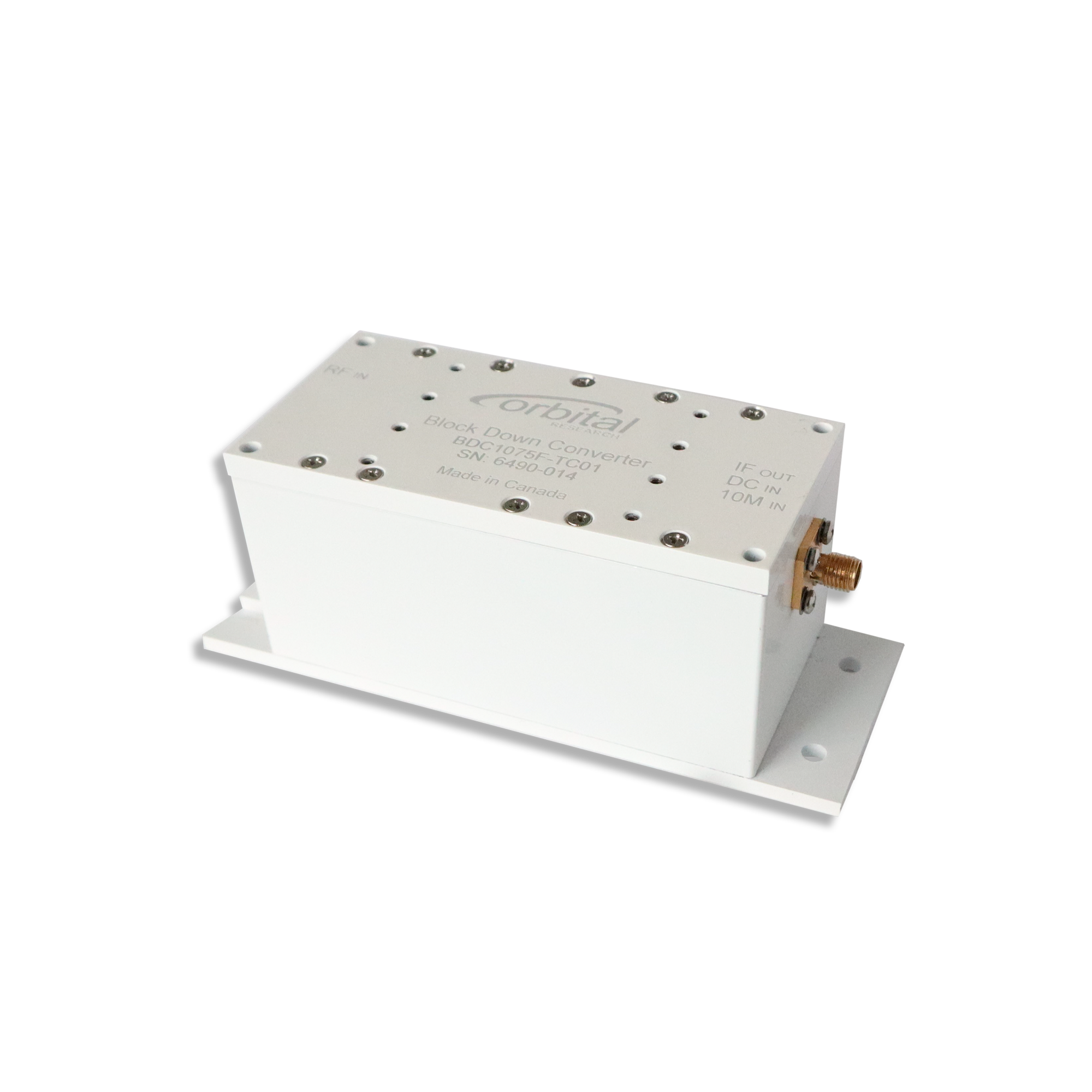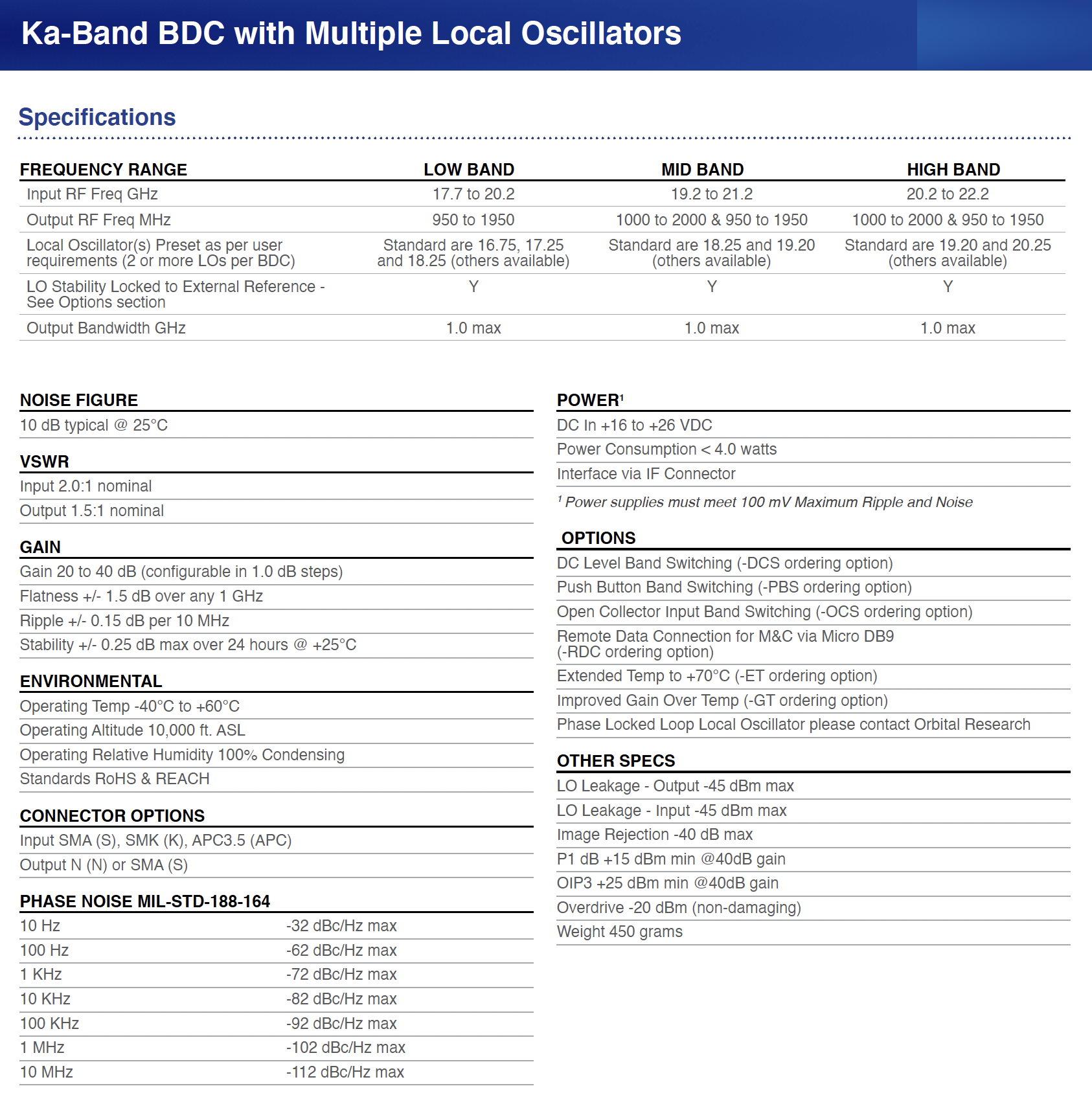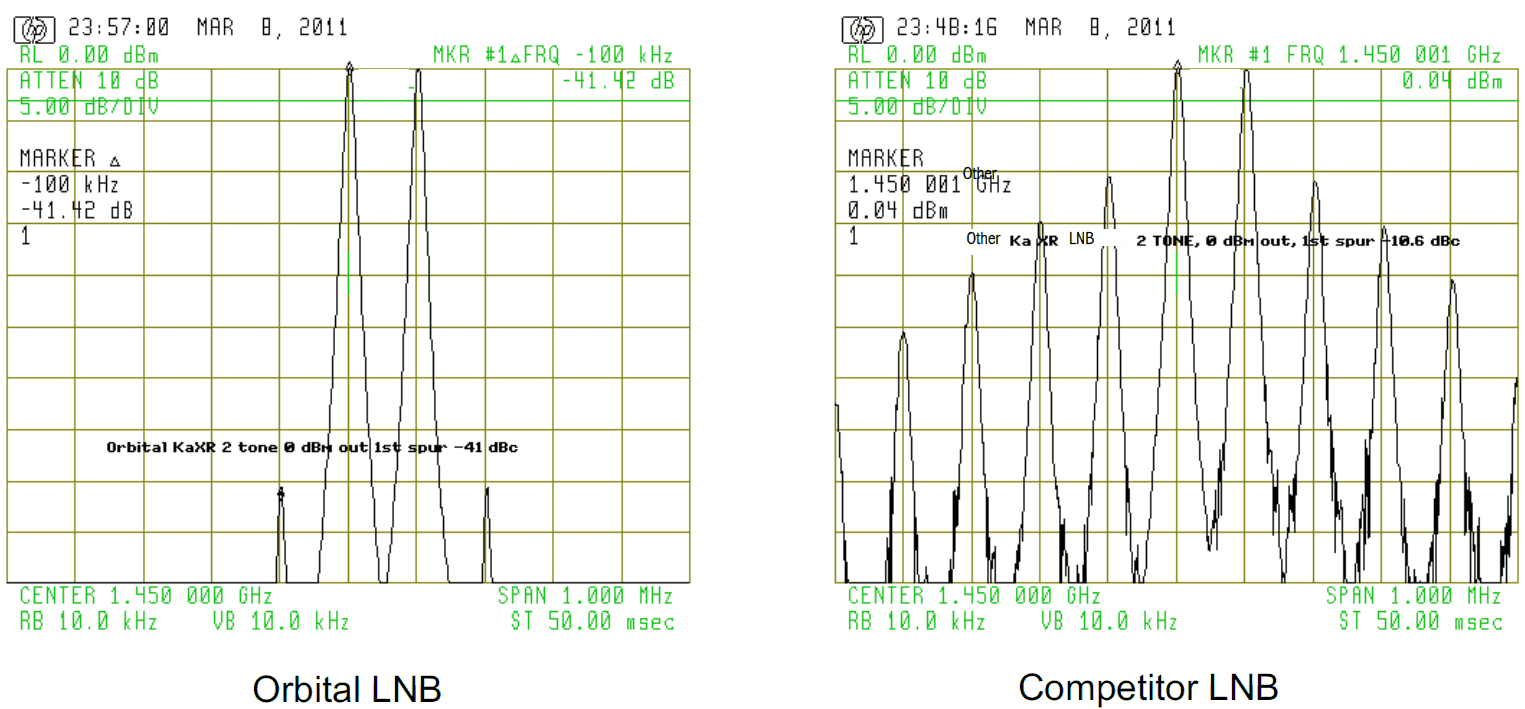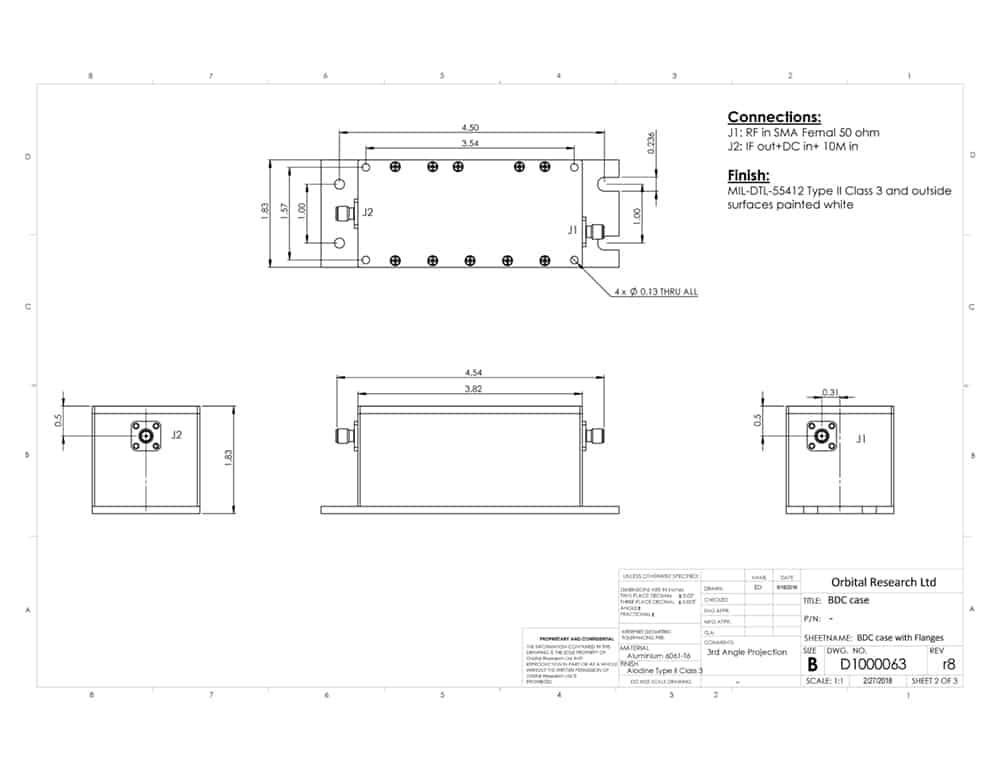Ka-Band BDC with Multiple Local Oscillators
The Orbital Ka-Band Block Downconverter (BDC) with Multiple Local Oscillators delivers market-leading performance for broadband Ka satellite communications. The standard version comes with a choice of:
- 1 GHz of bandwidth and IF output of 950 to 1950 MHz
- 1 to 2 GHZ with RF inputs of 18.2 to to 20.2 GHz, 19.2 to 21.2 GHz, or 20.2 to 22.2 GHz.
Standard band switching is voltage controlled with other switching methods available. With very flat frequency response, ultra– low phase noise, and high linearity, this model will provide higher throughput, lower BER, higher modcods, and better link margin when compared to the competition.
- External referenced for stability
- Exceptionally low phase noise
- Preset signal gains from 0 to 40 dB
- Linearity for higher-order modulation schemes
- Options for temperatures up to 70°C
Applications
Our Ka-band BDCs with multiple local oscillators are designed for mobile, commercial, military, and Broadband Satellite Services (BSS) SATCOM applications that require high performance over wide Ka Band satellite downlink spectrum. An airborne version, for use with flat panel antennas, is also available.



